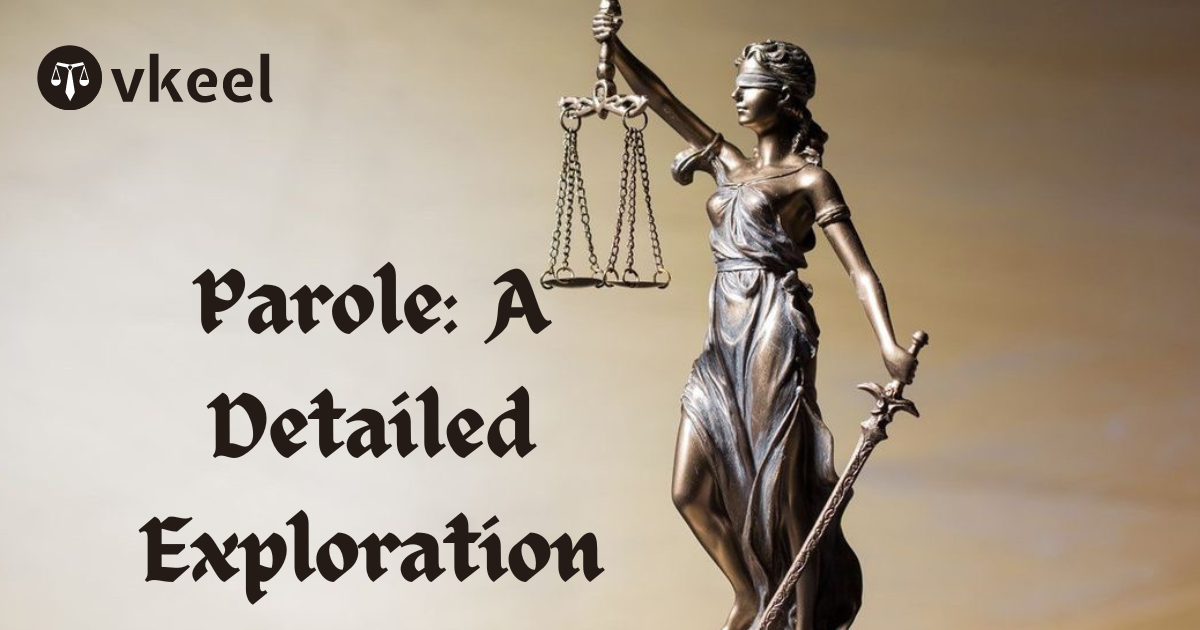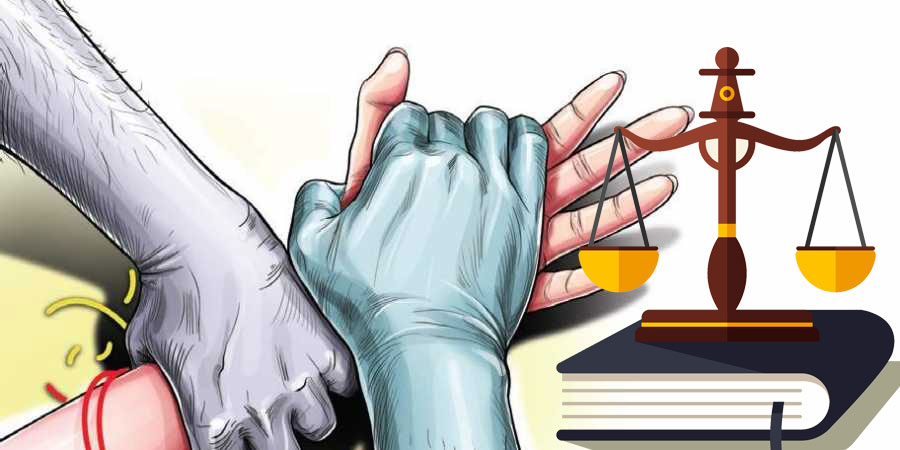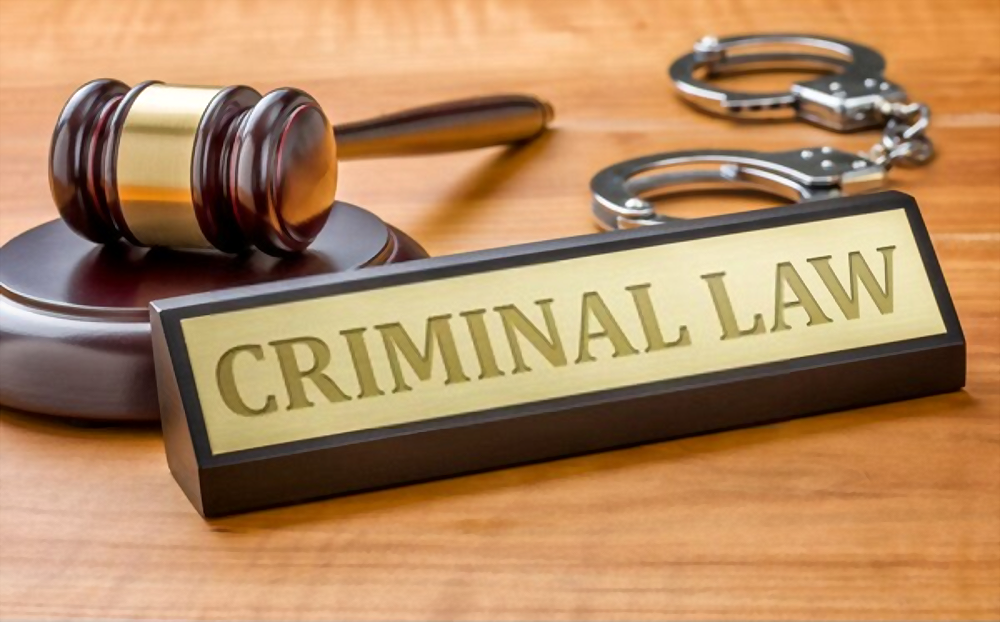Parole: A Detailed Exploration
By Himanshu Kumar
Table of Contents
Introduction
Parole is a conditional release mechanism within the criminal justice system that allows inmates to serve the remainder of their sentences outside of prison under supervision. It aims to facilitate the reintegration of offenders into society by providing them with structured support while ensuring public safety. Parole is granted based on factors such as the inmate’s behavior in prison, the nature of their offense, and their potential risk to the community.
A parole board assesses these factors and sets specific conditions that the parolee must follow, such as regular reporting to a parole officer, maintaining employment, and abstaining from illegal activities. If the parolee violates these conditions, they risk being returned to prison. By promoting rehabilitation and reducing prison overcrowding, parole serves as a crucial tool in the justice system, balancing the needs for punishment, public protection, and the offender’s reformation.
Definition of Parole
Parole is the release of a prisoner who agrees to certain conditions before the completion of their maximum sentence. It is distinct from probation, which is an alternative to incarceration. Parole typically follows a period of imprisonment and involves monitoring and compliance with specific terms set by a parole board or other governing authority.
Objective of Parole
The primary objectives of parole include:
Rehabilitation: Helping offenders reintegrate into society by providing support and monitoring.
Public Safety: Ensuring that offenders do not pose a threat to the community.
Reduction of Recidivism: Decreasing the likelihood that offenders will commit new crimes by offering structured support and supervision.
Cost-Effectiveness: Reducing the financial burden on the prison system by supervising offenders in the community.
Parole Process
The process of granting parole involves several steps and varies by jurisdiction but generally follows a similar structure:
Eligibility Determination: Inmates become eligible for parole after serving a specific portion of their sentence, as determined by law or sentencing guidelines.
Parole Hearing: Eligible inmates appear before a parole board, which assesses their suitability for release based on various factors, including behavior in prison, the nature of the offense, and input from victims and law enforcement.
Decision Making: The parole board decides whether to grant parole based on the inmate’s likelihood of reoffending, readiness for reintegration, and adherence to prison rules.
Setting Conditions: If parole is granted, conditions are set that the parolee must follow. These can include regular meetings with a parole officer, employment requirements, residence restrictions, curfews, and participation in rehabilitation programs.
Supervision: Parolees are supervised by parole officers who ensure compliance with parole conditions and provide support services.
Revocation: If parole conditions are violated, the parolee may be brought before the parole board for a revocation hearing, which can result in returning to prison.
Conditions of Parole
Parole conditions are tailored to the individual and the nature of their offense. Common conditions include:
- Regular Reporting: Parolees must regularly check in with their parole officer.
- Employment: Maintaining steady employment or participation in job training programs.
- Residency Requirements: Living in a specified location and not moving without permission.
- Drug and Alcohol Restrictions: Abstaining from substance use and possibly undergoing regular testing.
- Restrictions on Associations: Avoiding contact with certain individuals, such as co-offenders or victims.
- Travel Restrictions: Staying within a specific area unless given permission to travel.
- Participation in Treatment Programs: Attending substance abuse counseling, mental health treatment, or other rehabilitative services.
Parole Board
The parole board plays a crucial role in the parole process. Comprising appointed officials, the board evaluates parole applications, conducts hearings, and makes decisions on granting, denying, or revoking parole. The board’s decisions are guided by statutory regulations and the principles of justice and rehabilitation.
Factors considered by Parole Board
Parole boards assess several factors when deciding on parole:
- Behavior in Prison: Compliance with prison rules, participation in rehabilitation programs, and overall conduct.
- Nature and Severity of the Offense: The original crime’s circumstances and its impact on victims and the community.
- Risk of Recidivism: Evaluations of the likelihood that the offender will reoffend if released.
- Rehabilitation Efforts: Evidence of personal growth, remorse, and efforts to address the issues that led to the crime.
- Victim Impact Statements: Input from victims or their families regarding the potential parolee’s release.
- Support System: The availability of a stable home environment and support network upon release.
Benefits of Parole
Parole offers several advantages for the criminal justice system and society:
- Eases Prison Overcrowding: Reduces the inmate population, alleviating overcrowded conditions in prisons.
- Encourages Rehabilitation: Incentivizes inmates to engage in good behavior and participate in rehabilitation programs.
- Facilitates Reintegration: Helps offenders transition back into society with structured support, reducing the shock of reentry.
- Cost Savings: Supervision in the community is generally less expensive than incarceration.
Recent Reforms and Amendments
Parole, as a mechanism for conditional release of prisoners, has seen various amendments and reforms in India to address the evolving needs of justice, rehabilitation, and public safety. These changes are part of ongoing efforts to modernize the criminal justice system and enhance the reintegration of offenders into society.
Key Amendments and Developments
Uniform Parole Rules (2015)
- The Ministry of Home Affairs, in an effort to standardize parole practices across the country, issued guidelines for the grant of parole and furlough. These guidelines aimed to ensure consistency and fairness in the parole process, addressing disparities among different states’ practices.
- Key provisions included setting clear criteria for eligibility, defining the maximum duration of parole, and specifying conditions for extension and revocation.
Digital Monitoring and E-Parole (2020)
- The COVID-19 pandemic accelerated the adoption of digital technologies in the criminal justice system. Several states introduced e-parole systems to facilitate parole applications and monitoring through online platforms.
- Digital monitoring tools, such as GPS-enabled tracking devices, have been implemented to ensure better supervision of parolees and reduce the risk of violations.
Model Prison Manual (2016)
- The Model Prison Manual introduced by the Ministry of Home Affairs included comprehensive guidelines for the parole system. It emphasized the need for a more rehabilitative approach, providing detailed procedures for parole application, assessment, and supervision.
- The manual encouraged states to adopt uniform rules and improve the transparency and efficiency of the parole process.
Amendments to State Rules
- Various states have amended their parole rules to address specific regional needs and challenges. For example, Maharashtra made significant amendments to its parole and furlough rules in 2016 and 2020, introducing stricter eligibility criteria and enhanced monitoring mechanisms.
- These amendments often focus on improving the parole decision-making process, incorporating victim input, and ensuring that parolees do not pose a threat to public safety.
Supreme Court Directives
- The Supreme Court of India has issued several directives to streamline parole procedures and ensure they align with constitutional principles. Notable cases, such as Arnesh Kumar v. State of Bihar (2014), highlighted the need for humane treatment of prisoners and the importance of parole as a rehabilitative tool.
- The Court has emphasized the need for timely parole hearings and decisions, ensuring that eligible prisoners are not unduly kept in confinement.
Focus on Rehabilitation and Reintegration
- Recent reforms have increasingly focused on rehabilitation and reintegration of parolees. This includes providing better access to vocational training, mental health support, and substance abuse programs.
- The aim is to equip parolees with the necessary skills and support to reintegrate successfully into society, reducing the risk of recidivism.
International Perspective on Parole
Parole systems vary widely across different countries, reflecting diverse legal traditions and penal philosophies.
United Kingdom
In the United Kingdom, the parole system operates under the jurisdiction of the Parole Board for England and Wales. The parole process includes a detailed review of the offender’s case, risk assessments, and input from various stakeholders, including victims. Recent reforms aim to increase transparency and accountability in parole decisions.
Canada
Canada’s parole system, managed by the Parole Board of Canada, emphasizes rehabilitation and reintegration. The Canadian system includes various types of conditional release, such as day parole and full parole, each with specific eligibility criteria and supervision requirements. The Corrections and Conditional Release Act governs the parole process, ensuring a structured and transparent approach.
Australia
In Australia, parole practices differ among states and territories. Each jurisdiction has its own parole board and regulations governing the parole process. Australian parole systems focus on individualized assessment and support, aiming to balance public safety with the rehabilitation of offenders.
Challenges and Criticism of Parole
While parole offers numerous benefits, it also faces several challenges and criticisms. These include concerns about public safety, the potential for unequal application of parole, and the effectiveness of parole supervision.
Public Safety Concerns
One of the primary criticisms of parole is the perceived threat to public safety. High-profile cases involving parolees who commit new offenses can undermine public confidence in the parole system. This necessitates rigorous risk assessment procedures and effective supervision mechanisms to mitigate potential risks.
Inequities in Parole Decisions
There are concerns about disparities in parole decisions based on race, socioeconomic status, and other factors. Studies have shown that minority offenders often face higher barriers to parole. Addressing these disparities requires transparent and consistent parole procedures, as well as ongoing training for parole board members to mitigate biases.
Effectiveness of Supervision
The success of parole largely depends on the effectiveness of supervision and support services provided to parolees. Inadequate resources and high caseloads for parole officers can hinder the ability to monitor and assist parolees effectively. Enhancing support services, such as job training, substance abuse treatment, and mental health counseling, is crucial for improving parole outcomes.
Landmark Cases Influencing Parole in India
Parole in India, as a critical aspect of the criminal justice system, has been shaped by several landmark judicial decisions. These cases have addressed issues ranging from the principles governing parole to the procedural aspects and the rights of prisoners. Here are some significant cases that have influenced the parole system in India:
Sunil Batra v. Delhi Administration (1980)
Facts and Judgment: This case addressed the inhumane conditions in Indian prisons and emphasized the rights of prisoners. The Supreme Court of India ruled that prisoners retain all their fundamental rights except those that are necessarily curtailed by the fact of imprisonment.
Impact on Parole:
- Highlighted the need for humane treatment of prisoners.
- Reinforced the concept that parole, as a tool for rehabilitation, should be administered in a manner consistent with the fundamental rights of prisoners.
State of Haryana v. Mohinder Singh (2000)
Facts and Judgment: In this case, the Supreme Court examined the scope of parole in the context of Haryana’s prison rules. The court ruled that parole is not an absolute right of the prisoner but a concession given to certain categories of prisoners under specific circumstances.
Impact on Parole:
- Clarified that parole is a discretionary relief rather than an entitlement.
- Stressed the importance of clear guidelines and criteria for granting parole to avoid arbitrary decisions.
Asfaq v. State of Rajasthan (2017)
Facts and Judgment: Asfaq, the petitioner, challenged the denial of parole despite having served a considerable portion of his sentence and maintaining good conduct. The Supreme Court ruled in favor of Asfaq, stating that parole should not be denied arbitrarily and that prisoners who have demonstrated good behavior and meet eligibility criteria should be granted parole.
Impact on Parole:
- Ensured that parole decisions are made fairly and transparently.
- Emphasized the need for parole to be granted based on objective criteria and the prisoner’s conduct.
Rajesh D. Darbar v. State of Gujarat (2010)
Facts and Judgment: The petitioner sought parole to attend to urgent family matters. The Supreme Court of India reiterated that while parole is a discretionary relief, it should be considered sympathetically in cases involving family emergencies.
Impact on Parole:
- Highlighted the humanitarian aspect of parole.
- Recognized the importance of familial bonds and responsibilities, influencing the criteria for granting parole for family-related reasons.
Dadu @ Tulsidas v. State of Maharashtra (2000)
Facts and Judgment: In this case, the Supreme Court dealt with the issue of whether parole could be granted to a prisoner convicted under the Narcotic Drugs and Psychotropic Substances Act (NDPS Act). The court ruled that parole could be considered even for those convicted under stringent laws like the NDPS Act, provided they meet the necessary conditions.
Impact on Parole:
- Affirmed that parole is applicable even to those convicted under special laws, ensuring a more inclusive approach.
- Established that the nature of the offense, while important, should not be the sole determinant in parole decisions.
Home Secretary (Prison) v. H. Nilofer Nisha (2020)
Facts and Judgment: This case involved a challenge to the denial of parole to a woman prisoner who sought to care for her minor child. The Supreme Court ruled in favor of the petitioner, emphasizing the welfare of the child and the prisoner’s right to parental duties.
Impact on Parole:
- Reinforced the principle of considering the best interests of the child when deciding parole.
- Highlighted the need for gender-sensitive approaches in the parole system.
State of Maharashtra v. Madhukar Narayan Mardikar (1991)
Facts and Judgment: Madhukar Narayan Mardikar, a prisoner, was denied parole due to allegations of misconduct while on an earlier release. The Supreme Court ruled that past misconduct could be a valid ground for denying parole, but such decisions should be based on concrete evidence and not merely on allegations.
Impact on Parole:
- Stressed the importance of evidence-based decisions in parole matters.
- Ensured that prisoners are given a fair chance to defend against allegations that could impact their parole eligibility.
Conclusion
Parole remains a vital component of the criminal justice system, offering a pathway for the supervised reintegration of offenders into society. The practice of parole is shaped by a complex interplay of legal frameworks, case laws, and ongoing reforms. While challenges persist, innovations in technology and evidence-based practices hold promise for enhancing the effectiveness of parole systems. By addressing disparities, improving supervision, and fostering rehabilitation, parole can contribute to reducing recidivism and promoting public safety.
As the legal and societal landscape continues to evolve, parole systems must adapt to meet new challenges and uphold the principles of justice and rehabilitation. Through continuous improvement and commitment to fairness, parole can play a crucial role in the successful reintegration of offenders and the overall efficacy of the criminal justice system.
Disclaimer:
The information provided in the article is for general informational purposes only, and is not intended to constitute legal advice or to be relied upon as a substitute for legal advice. Furthermore, any information contained in the article is not guaranteed to be current, complete or accurate. If you require legal advice or representation, you should contact an attorney or law firm directly. We are not responsible for any damages resulting from any reliance on the content of this website.








